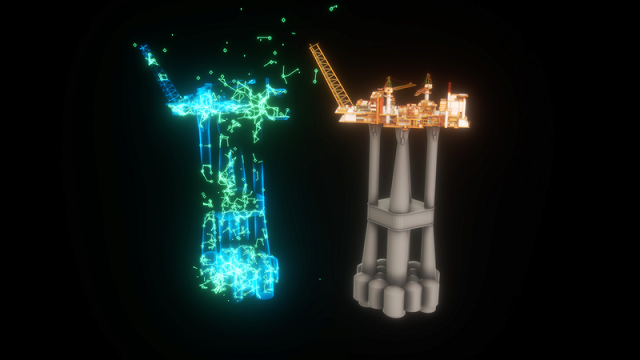Ten Trends to Bring Humanity “Technological Bliss”
A new report from DNV GL has identified 10 technology trends, and their associated risks, that will shape industry and society in the coming decade.
The rapid advancement of digitalization is behind many of the trends. The relationship between humans and technology is switching, with humans increasingly augmenting the decisions of artificial intelligence, rather than the other way around. For example, in the next decade there will be a greater proliferation of autonomous vehicles, whilst energy production and transmission will increasingly become the domain of algorithms rather than people.
The report describes an ideal 2030 as the cumulative result of a change in values, personal and institutional, in business models, and a change in governance implemented at scale across all regions. With this the Sustainable Development Goals could be met. “Technology has already helped to lift many millions of people out of poverty, and created leapfrogging opportunities in health, education and energy access. The challenge and opportunity, now, is to broaden and deepen these effects.”
Despite holding the potential to deliver “technological bliss,” the Technology Outlook 2030 says that the next decade is in danger of being characterized by missed opportunities, particularly our inability to address climate change and inequality. However, the keys are in ours hands to prevent negative outcomes, and with the correct regulatory framework, technology can greatly help to address humanity’s fundamental challenges.
The report highlights that energy, aquaculture and transport infrastructure is increasingly being established offshore and could offer significant benefits. Multipurpose offshore platforms may combine offshore energy generation such as wind, wave, solar, marine currents and ocean thermal energy conversion, aquaculture, leisure and transport in different degrees and constellations. For example, harvest wind and wave power, using part of the energy on-site for multiple applications such as a multi-trophic aquaculture farm, and convert on-site the excess energy into hydrogen that can be stored and shipped to shore as a green energy carrier or sold to visiting ships as fuel, keeping them clean and emissions-free.
National initiatives worldwide are establishing the economic and technical feasibility of scaling up hydrogen production for safe industrial and societal use; it could even power entire cities, says DNV GL. “We believe that engineering can overcome safety issues. In our view, the main challenge is being able to create low-carbon hydrogen value chains with economic potential to scale globally.”

Towards 2030, digital ship system representations in the concept phase of shipbuilding (3D drawings, descriptions, requirement and use-case specifications, high-level risk analyses, generative design) will be detailed and optimized throughout the design phase, extended with simulation models representing all relevant system aspects and giving operators the ability to perform complex tasks in, for example, virtual system integration. In the production phase, this information can be used for vendor specification and follow-up, and detailed with both as-built vendor information and detailed interface and integration information. The project management information is then added, enabling simulation-based optimization of the installation and commissioning processes.
The increasing availability of live sensor data will open up a whole new world for optimization and decision support, states the report. Massive sensor technology and the possibility to store and handle huge amounts of data will lead to the possibility of keeping the digital twin “alive” throughout the lifecycle, and the possibility to integrate the data streams from the real asset in digital twin analyses.
Additionally, the next 10 years will be defined as an era of precision, particularly in healthcare, food, and materials science. Agriculture and aquaculture will look toward robotics in combination with IoT-based and machine learning technologies to optimize crops and seafood at reduced cost. Additionally, increasingly precise sensor data will help the food industry meet expectations from consumers for insight into the entire value chain for individual products.
Traditional business models will be disrupted. Space, which was once reserved for state players, will continue to be transformed by private enterprises, who are driving down costs, for example through reusable launchers, enabled by advances in computing and manufacturing. The scope of Big Tech will widen as data becomes an increasingly important commodity, putting it toe-to-toe (and sometimes in partnership) with Big Pharma, for example.
Under-performing sensors, communication and algorithms, unintentionally (cyber safety) or deliberately manipulated (cyber security), are the principal sources of the new risks. In addition, there is the increasing complexity of software systems, multiplied in uncertainty by machine learning and AI-based systems.
The digital transformation also opens new trust gaps in industries like food, health and manufacturing, in which a previously entirely physical-based business is augmented and eventually replaced by a digital business.
The Technology Outlook 2030 features 10 technology trends, 54 technologies that matter and 21 impact investigations across five global industries.
The report is available here.
